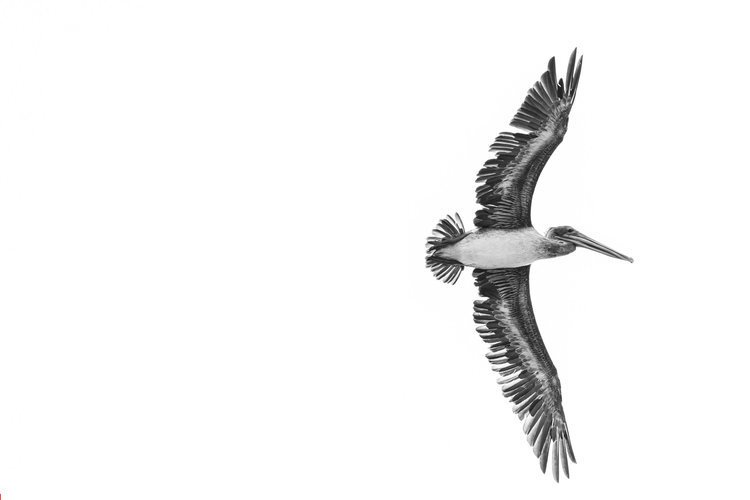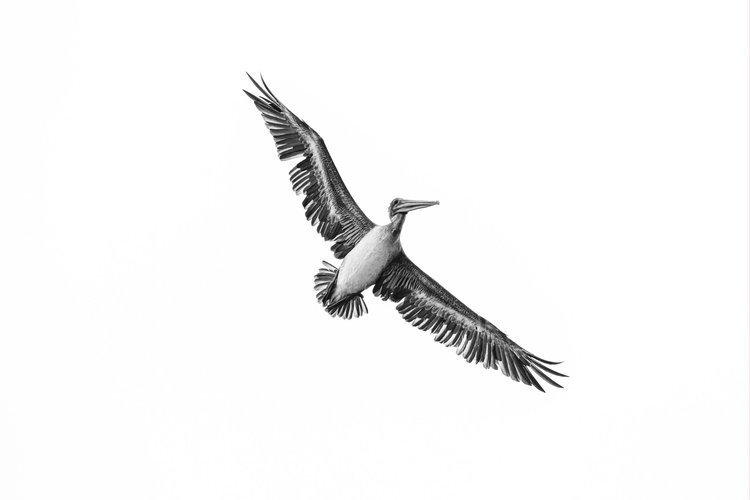Capturing Pelican Pictures With Lukas Griffin
Hello, my name is Lukas Griffin and I’m a professional photographer and founder of lukasgriffin.com. Originally from the United Kingdom and now a resident of Southern California, my passion to capture both nature and people are harnessed by my new home of nine years.
Throughout history, humans have had an intimate relationship with nature, and I'm inspired by people interacting with their natural surroundings, enjoying the free moments and doing the things they love. What I love to do is capture the moments that the eye should see.
I feel lucky to do what I feel passionately about, traveling to new places, exploring and creating new Pelican images are amongst the list. I adore the diversity of the earth, the mountains, the ocean, the wildlife, and the changing light. I feel at my happiest capturing the true essence of being free and enjoying life, which is exactly what my journal represents.
In today’s article, I am going to share the key concepts which should be considered when photographing Pelicans mid-flight. One of the most necessary ingredients in this recipe however is patience. It is not uncommon for professional photographers to shoot all day and to come back with next to no ‘usable’ images and in most cases, there is usually some form of ‘luck’ involved, being in the right place at the right time.
However, this guide will hopefully shed some light on the subject and you will soon be able to capture impressive Pelican images of your own. So, here are a few tips which I’ve learned through experience over the years:
Choosing A Location - Rivers or lakes are great locations to start with if you’re hoping to capture some really clear Pelican pictures. These birds like to gather near to the water due to abundant food sources. Naturally, Pelicans are eager to track down things that they can eat so, locations such as this are often populated with Pelicans and other various types of bird mid-flight.
The best advice that I could give in this instance is to be ready. You’ll have mere moments if you are lucky to capture your shots with a clear view. I would suggest finding a position on a hill that will put you at eye level or at a higher vantage. Another important factor to consider is actually the position of the sun. Sunlight should come from behind you or just from the left/ right of your subject.
Also, birds in general tend to take off and land in the direction of the wind. So, knowing the direction of the wind in your location will help you to predict the flight and landing direction of the birds that you are photographing. Who knows, maybe if you predict their movements just right, you’ll capture some really clear and detailed shots, adding to your collection of Pelican pictures.
Available Lighting - Secondly, good lighting plays an important part where successful photography is of this nature is concerned. Thinking about this logically, many forms of outdoor photography thrive from the golden light of the morning / evening sun so, these are specific times that you should be planning your shoot around.
Due to the nature of this shoot, these times can be extended ever so slightly and still provide a nice lighting on your subject. I would however still urge you to take some time to figure out when the golden hour is due to set in your location and plan your shoot from there.
Be Invisible - Some birds will not venture near a human presence, so you need to make yourself the least visible as possible to the bird’s eye. In some cases, it might be as simple as not wearing brightly colored clothing, but avid bird photographers may also want to set up some kind of blind to conceal themselves further.
These can be purchased inexpensively from most hunting stores. Also, sitting will make you less noticeable to the birds than if you are standing. So, firstly blend in with your background and get to a low vantage point before taking your shots. If you remain inconspicuous, you will be more likely to capture natural Pelican images of birds in their prime.
Study Your Subject - My next piece of advice would be to study the birds that you enjoy photographing and learn their individual habits. This can help you to predict their movements, which you can then prepare yourself for and capture them on camera. For instance, many birds, especially the larger species like Herons and Eagles, will relieve themselves just before they fly.
Knowing this can help you be ready to shoot when they take off. I’ve really been getting into shooting Pelican images recently, but you can apply the tips that I’ve included within this article to many different forms of bird photography. I’ve tried to keep my tips pretty generic so that you can use these pieces of advice in different shoots.
Choosing A Lens - Choosing your lens can be a challenge so be advised that you should use the fastest and largest lens you can afford. For your best chance at a great shot, you would want at least a 300mm lens, but a 500mm to 600mm prime lens is preferable.
Unfortunately, these lenses don’t come cheap so, you may have to work your way up to the right lens as you save the funds to finance your equipment. But in all honesty, choosing the right lens is super important. Even though it may seem a little extravagant, you’ll be able to see the difference running throughout your images.
Choosing A Tripod - A great tripod is an essential piece of equipment when shooting birds in flight. This is especially true for those of you who are planning on using a large lens. A gimbal head tripod will balance both your camera and its lens. So, what is a gimbal? A gimbal is a type of tripod head that allows you to perfectly balance the weight of your camera so that it can be moved effortlessly both vertically and horizontally. Using a gimbal head tripod will make quick movements seem effortless when your lens needs to be pointing in the right place at the right time. A less expensive option is a Pan head, which also allows for movement in all directions on two different axes. The more common Ball head can be used with effect for birds in flight photography, but is not a very stable solution for super large lenses. So, that is something to bear in mind for the long-term.
Photo Composition - Composition can sometimes be the most difficult aspect of photographing birds in flight due to fast movement. It’s one of those types of photography where you have to capture what you can get and review your gallery later. As much as you may hope to capture some part of your chosen landscape, you just never know what you’ll actually capture on screen until you’ve taken a shot! Not only are you occupied with keeping your bird/ subject in sharp focus, you’ll also be trying to make a pleasing composition.
All the rules of composition applying to any photo remain valid here. You’ll always want to have more space in front of the bird than behind. A good rule is to have at least two to three times the space in front of the bird. One practice that helps maintain this space is to place your focus point in the center and try to keep it on the bird’s eye. This method works really well on large beaked birds like the Heron Pelican. While most bird/ Pelican pictures are of single birds in flight, look out for those rarer occasions where you may capture two or three or even more birds for a greater image!
Technique - As your subject is flying toward you, quickly lock your focus. When the subject is close enough and, in the position, that you like, fire away and keep panning even after you have stopped shooting. This follow-through motion will keep your last image in focus better than an abrupt stop.
While panning as the bird or birds fly by, you’ll want to match your panning speed to that of the bird. Depending on your shutter speed, this will help keep the bird in focus while the background may be blurred. It’s a wildlife photography principle that you’ll want to keep the bird’s eye in focus and sharp at that.
If you are holding your camera by hand, try to keep your left hand under the barrel of your lens and your elbows close to your body, as this will help you to maneuver the camera as steadily as possible. If you are standing, keep your legs spread out to give you a good sturdy base. If you are planning to hold your location and position for a time, using a tripod is recommended to help keep you steady, especially if you are using a very heavy lens.
So, to summarize, stay alert and look for opportunities to capture birds in flight. If you’re going to focus on producing eye-catching Pelican pictures like I have, then these tips will be perfect for you. Just remember that it will take practice to curate that perfect image, but when you do you will be hooked and after that, you’ll just want to keep shooting.
If you’d like to keep up to date, feel free to visit my Instagram page @lukasgriffin for further examples of my photography work.
PHOTO CREDITS
All photos used within this article are courtesy of Lukas Griffin.
All images are available to purchase as prints, view all collections.





